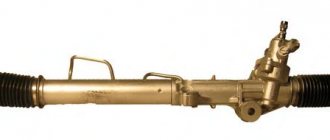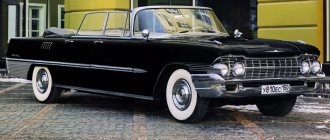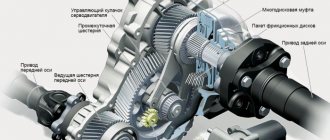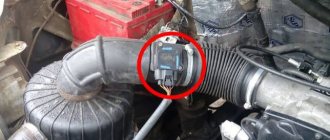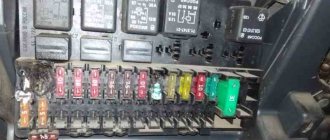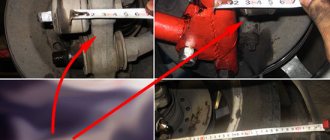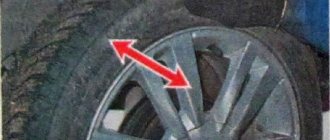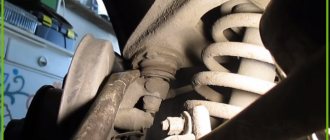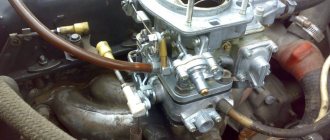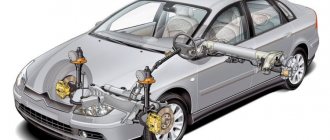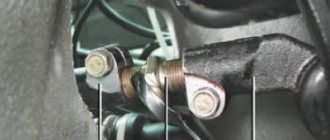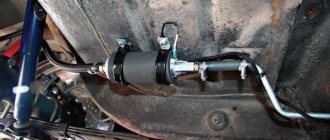Suspension - there is so much in this sound... In every sense. Whatever, she knows how to sound. Depending on the design, the suspension can be simple or have a complex design. In the same way, it can be reliable, and vice versa, “crumble” after every thousand kilometers.
During its existence, the car suspension has gone through a huge evolutionary path. Once upon a time, the spring system was considered the height of progress, but today the design of modern suspensions can be compared to a work of art - they are such perfect, complex and expensive devices.
Purpose
The suspension in a car is necessary to soften the impacts that the wheels receive from uneven roads. Thanks to it, the car body is literally suspended above the surface on the elastic elements of the chassis.
This ensures the vehicle's smooth ride and controllability in difficult terrain conditions. In other words, it is needed for the car to move with a certain level of comfort, without shaking and vibration.
Let's look at what will happen to a car if it does not have a suspension and the wheels are rigidly connected to the body. In this case, the impacts from the wheel will be completely transmitted to the body, slightly softened by the tires .
If you add an elastic spring to the suspension design, the shock to the body will be significantly softened. In this case, the body will continue to sway for a long time due to inertia. This makes driving difficult and dangerous.
With such a device, there is a high probability of “breakdown” - when the moment of compression of the suspension spring coincides with a shock from the road. There is a term among motorists: “Breaking through the suspension.” To eliminate this effect, a damping element is added to the circuit - shock absorber . It is designed to dampen body vibrations when the springs operate.
Suspension device
The car has front and rear suspension. We will talk about each of them separately, because they are structurally different from each other.
But each of them has mandatory elements - springs and shock absorbers.
On older cars and trucks, the rear suspension has leaf springs instead of springs. This is due to:
- Cheapness of its production;
- Applicability in dependent suspension;
- Maintainability and fewer chassis parts;
- Leaf springs are more durable than coil springs.
Shock absorber
They come in three types:
- Oily;
- Gas;
- Combined - gas-oil.
The first type is more suitable for a quiet and comfortable ride. Therefore, they are installed in civilian vehicles. In modern cars there is a third type - combined gas-oil shock absorbers.
The second type is used in sports cars. It is designed to minimize body roll in fast corners. When a car takes a turn at high speed, its body rolls heavily. In this case, the outer wheel rises above the road, losing traction. To increase the speed and safety of cornering, gas shock absorbers are used. They are stiffer, less susceptible to inertia, and press the wheel to the asphalt faster.
How does he work
A car suspension shock absorber is a cylinder in which a piston is placed. They are not connected to each other and can move independently. This piston has holes. The cylinder is filled with a special liquid. Its upper end is attached to the car body. Bottom, to the suspension arm.
When a wheel hits a hole, it rises sharply. The piston in the cylinder contracts, but this does not happen sharply. It is hampered by oil, which does not have time to quickly flow through the small holes in the piston. As a result, the piston slows down its movement, the shock is damped and softened.
When the suspension is in compression mode, the reverse process occurs. The piston returns up, the oil flows back and slows down the rate of rise of the piston. Thus, there is no sudden jump in the car body when the suspension springs are released.
If the shock absorber is faulty, the car body will “gallop” like a wild horse when driving over any irregularities, even speed bumps.
More detailed information about shock absorbers can be found in the blog “Experienced Car Enthusiast”. It describes all types of shock absorbers, their advantages and disadvantages, and the operating principle of each of them. This is not an advertisement, I recommend it.
A shock absorber paired with a spring is called a spring strut . All modern front-wheel drive cars are equipped with it.
Levers
Using suspension arms, the wheels are attached to the chassis. They transmit longitudinal and transverse forces to the power elements of the body. They control the movement of the wheel while the car is moving.
How many levers are there in the suspension?
Depending on the type of suspension, the number of levers can reach up to eight pieces in front . They may also be behind. This type is called “multi-lever”.
Inexpensive car models usually use MacPherson strut suspension - one lever per side with a spring strut. This type has become widespread in modern cars. This is due to the simplicity of design, comfort and low cost.
In classic VAZ cars, the front suspension has two levers on one side - upper and lower. This is a two-link suspension. Instead of a spring strut, a scheme with separate shock absorbers and springs is used; they are not assembled into a single structure.
In a dependent suspension there are no levers at all. With this scheme, opposite wheels of the same axle are connected by a beam. Therefore, any horizontal movement of one wheel affects the behavior of the other; they depend on each other.
History of appearance
Attempts to make the movement of a vehicle softer and more comfortable were made in carriages. Initially, the wheel axles were rigidly attached to the body, and every unevenness in the road was transmitted to the passengers sitting inside. Only soft cushions on the seats could increase the level of comfort.
Dependent suspension with transverse spring arrangement
The first way to create an elastic “layer” between the wheels and the carriage body was the use of elliptical springs. Later, this solution was borrowed for the car. However, the spring had already become semi-elliptical and could be installed transversely. A car with such a suspension handled poorly even at low speed. Therefore, springs soon began to be installed longitudinally on each wheel.
The development of the automotive industry has also led to the evolution of the suspension. Currently, there are dozens of their varieties.
Anti-roll bar
It reduces car body roll and improves its handling.
It is made in the form of the Russian letter “P”, clearly visible in the picture. It is a steel rod with large elastic deformation. In simple words, it is difficult to break it; it will always strive to take its original shape.
It has four attachment points. Its opposite edges are fixed to the suspension arms. The central part is attached to the body.
How does he work
When a roll appears, one part of the body rises, the other lowers - this is logical. The part of the stabilizer, which is attached to the power element of the body, rises and unscrews the stabilizer.
Due to its great elasticity, it lifts its opposite attachment point, and with it the body. In this way he tries to stabilize it in a transverse position relative to the road.
The second case when it works is when one wheel hits a hole or bump. Let's consider the option with a bump in the road.
In such a situation, one wheel moves upward relative to the body. In this case, the stabilizer rod experiences elastic deformation not at the point of attachment to the body, but to the suspension arm. Trying to take the original shape, with its second edge it lifts the opposite wheel and lowers the body. The car body is pressed to the ground, the center of gravity decreases and the car becomes more stable.
Ring springs
Ring springs are used primarily in cases where it is necessary to provide high rigidity in small dimensions (for example, in some designs of automatic coupler draft gears). This is achieved through the rational use of ring material and the presence of friction forces between the rings. Lubricant is used to ensure stable friction and prevent jamming.
Ring springs (Fig. 4, a) are a rigid elastic element for absorbing compressive axial loads. A ring spring consists of a set of heat-treated rings that are in contact with conical surfaces. Under the influence of load P, despite significant frictional forces on the conical surfaces of the rings, which prevent their relative sliding, they slide into one another. The rings, transmitting forces through their conical surfaces, are deformed: the outer ones are subject to elastic tension, and the inner ones are subject to elastic compression. As a result, the overall spring height H is reduced. After removing the load, since the cone angle β is greater than the friction angle p = arct μ (where μ is the sliding friction coefficient), the spring restores its previous dimensions due to elastic forces. The mutual movement of the rings is usually insignificant (1.5–4.5 mm), as a result of which it is necessary to have a large number of rings to obtain sufficient deflection.
Rice. 4 – Ring spring and diagram of its operation
The amount of work done by the friction forces between the rings (Fig. 4, b) performed when the spring is loaded depends on the accuracy of their manufacture and the presence of lubricant.
Silent blocks
All moving suspension elements are attached to the body through rubber inserts - silent blocks. They dampen vibrations from one part to another. They consist of two metal bushings with a rubber element between them. Due to its plasticity, vibrations during operation of moving parts of the chassis are dampened and their mobility is ensured.
For example, if there were no silent block at the place where the lever is attached to the frame, the lever would rub against the frame. This connection increased the wear of the metal and produced a terrible squeak when the car moved. In addition, any impacts on the wheel from the road were transmitted to the body, you would hear knocking noises. This would quickly break the fastening unit.
Therefore, when independently diagnosing a car’s suspension, pay attention to the condition of the silent blocks. They should not have cracks or damage. There are times when the inner bushing peels off from the rubber and begins to dangle and knock.
Designs of elastic elements
Multi-leaf springs are the most functional and simplest elastic element in design. At the same time, springs perform the functions of an elastic element, a guide and a damping device.
The disadvantage of leaf springs is their high metal consumption. The elastic deformation energy (potential deformation energy) related to the mass of a leaf spring is 2...3 times less than that of springs and torsion bars. Currently, semi-elliptical springs, symmetrical and asymmetrical, are mainly used.
Asymmetrical springs with a shorter (more rigid) length of the front part than the rear part make it possible to reduce the “dive” of the car when braking, thus partially performing the functions of a longitudinal stability stabilizer. The spring (Fig. 1, a) consists of sheets of the same width but different lengths assembled together.
The curvature of the sheets increases as their length decreases. The thickness and cross-sectional profile of the sheets (rectangular, parabolic, trapezoidal) can be different. Their choice is determined by the nature of the stress distribution along the length of the sheets and the level of permissible stresses.
Each of the spring leaves has holes for a central bolt, which is used to tighten the sheets before installation. The sheet or several sheets by which the spring is attached to the supporting system are called main sheets.
The ends of the main sheets are additionally processed - an eye is formed (Fig. 1, 6) or holes are punched to install parts for fastening the spring to the frame (body) of the car in one of the following ways: brackets for fastening using fingers or cups of rubber supports. To bring the spring structure closer to a beam of “equal” resistance, in which the bending stresses in each section of the sheets are equal in length, the ends of the remaining sheets can be pulled back (Fig. 1, c) or cut off along a trapezoid.
Rice. 1. Multi-leaf spring
Few-leaf and single-leaf springs (Fig. 2) are closer to the shape of a beam of equal resistance than multi-leaf springs. The cross-sectional height h of the sheet l of the spring at the point of attachment to the bridge beam 3 using stepladders 2 is determined from the strength condition at a given load. With a constant width b of the sheet, the height h of its sections along the length of the sheet varies along a parabola. The thickness of the ends made of alloy steels: chromium-manganese - 50KhG, 50KhGA, silicon-manganese 55GS and silicon 60S2.
Rice. 2. Leaf spring
The durability of leaf springs to this day remains less than the durability of other elastic elements, even when using special methods of metal hardening and sheet surface treatment. In addition, the difficulty of creating an independent spring suspension, the large mass of unsprung parts and friction between the spring leaves are the reasons for the decrease in ride smoothness.
Spiral springs (Fig. 3) are distinguished by their simplicity of design and at the same time high specific energy intensity.
Rice. 3. Coil spring
Given the short and simple manufacturing cycle, springs have become the most common elastic elements in car suspensions. When creating a spring with a variable pitch, a progressive change in spring stiffness is ensured. The advantage of such an elastic element is its compactness, low weight and ease of arrangement of suspension parts. A shock absorber or a hydraulic suspension strut can be placed inside the spring. It is important to ensure the immobility of the springs relative to the supports, for which the design of the ends of the springs or the support coils as a whole must meet certain requirements.
The lowest relative cost are springs whose ends are cut at right angles and tightened. A more expensive version of the spring is to press and grind the support coils to a plane. The main advantage of flat support coils is their simplicity, and therefore ease of production of spring support parts. Springs are easy to manufacture and inexpensive, the ends of which are twisted inside the spring to form a supporting surface. In addition to reducing the overall length of the spring, they provide easy installation on supporting surfaces. The disadvantage of such springs is that they cannot be installed inside shock absorbers.
Torsion bars, along with springs and springs, are widely used as elastic elements of suspensions.
A torsion bar is a shaft (rod) that produces torsion. Torsion bar suspensions, with equal energy intensity, have a significantly lower mass of the elastic element compared to a spring and have better suspension layout capabilities even compared to spring elastic elements. The last advantage is especially obvious when designing the suspension of the driving wheels of a car. Car suspensions use torsion shafts with cross sections shown in Fig. 4.
Basically, the cross-section of the torsion bar is a circle or ring, including a split one (Fig. 4, a, 6, c). In some designs, the torsion bar is made up of several rods (Fig. 4, d) or strips of the same or different widths (Fig. 4, e, f). Plate torsion bars are a set of strips of equal length with a square-shaped cross-section, subject to twisting during operation. It is economically feasible to produce plate torsion bars from sheets with identical section sizes.
Strips of the required thickness for stacked plate torsion bars are produced by rolling, which ensures compliance with stringent requirements for the accuracy of dimensions of the width and height of the profile. The use of cylindrical torsion bars with a circle or ring in cross-section most closely meets the requirements for the effective use of elastic element material in the case where the length of the rod is not limited by design and parameters.
Rice. 4. Sections of torsion bars
Cylindrical torsion bars work well not only under single impacts with a maximum stress level, but under constant high-level stresses. This is ensured by hardening and grinding the surface along the working length of the torsion bar. The design of the end sections is of great importance for cylindrical torsion bars. To transmit torque, it is technologically and structurally advisable to produce splined ends with a small profile. Such surfaces can be obtained by rolling or cutting, which ensures the alignment of the ends of the torsion bar.
A significant advantage of torsion bar suspensions is the ability to relatively easily adjust the height of the car or correct the roll in case of uneven settlement of the elastic elements. Therefore, in many cases, manufacturers use relatively complex designs for fastening the ends of the torsion bar with a large number of parts, but providing stepless adjustment of the suspension. The design of the end sections in these cases can be different, for example, with a square or hexagonal section.
Rubber elastic elements in car suspensions are used as additional elastic elements that work in compression, torsion or shear. Rubber elastic elements are much cheaper and more technologically advanced to manufacture than any metal elastic elements. To fasten the rubber compression spring 2 (Fig. 5), use a metal bushing 1, installed in the mold before vulcanization.
Rice. 5. Rubber elastic element
Many car manufacturers have long and successfully used rubber elastic elements in the designs of vehicle suspensions for a wide variety of purposes in a wide range of variations and technically permissible weights.
The advantage of rubber elastic elements is their progressive characteristic, which ensures a significant increase in the rigidity of the elastic element as it deforms. The main restrictions on the use of such elements are associated with disadvantages determined by the quality of the source material and manufacturing technology.
Pneumatic elastic rubber-cord elements (Fig. 6) are used on vehicles (buses, trucks, semi-trailers), the weight of the sprung masses of which can vary significantly.
Rice. 6. Pneumatic elastic element
Pneumatic elastic elements have low weight, high durability and progressive non-linear elastic characteristics. They are made of two-layer rubber-cord shells. To reduce rigidity and reduce its change during suspension deformation, the pneumatic element can be supplemented with metal containers, one or two, positions 1 and 2.
Hydropneumatic elastic elements (Fig. 7) differ in that the elastic element is a chamber with compressed inert gas under high pressure, and the working fluid transmits the vertical load.
Rice. 7. Hydropneumatic element
The normal reaction force Q from the wheel is transmitted to the gas in chamber 1 using the piston 4 of the hydraulic telescopic strut, the working fluid filling the cylinder 3, and the piston 2 of the elastic element. The gas pressure in the elastic element can reach 20 MPa, which ensures its compact dimensions. Damping of vibrations of the sprung mass is ensured by throttling the fluid through valves 5 and 6.
Stabilizer links or links
They link the anti-roll bar to the shock absorber arms or struts. Not all cars have them, it all depends on the suspension design.
For example, the VAZ 2107 does not have them. The stabilizer is screwed to the arms through rubber bushings.
The rods can also have silent blocks or balls, like the steering ends, to soften shock from the road. Over time, the rubber becomes dull and breaks. The stand begins to knock on uneven surfaces. The silent block does not change separately from the rod. If it is damaged, the entire stabilizer link must be replaced.
The most reliable type for Russia and the CIS
Every motorist in Russia complains about the poor condition of the roads. There is an opinion that all types of suspensions quickly wear out their service life when driving on Russian roads.
But this largely depends on the driving style of the car enthusiast. To extend the life of your entire vehicle, remember to slow down for or avoid bumps and potholes.
Drivers argue on forums which type is better. But it all depends on personal preferences - some people like a hard suspension, while others like a soft one. If we talk about reliability, spring and torsion types are considered durable. Manufacturers listen to the opinions of car owners and produce combined types, for example, torsion-spring ones.
Recommended: What is car engine torque?
Let's sum it up
The suspension consists of:
- Shock absorbers – dampen body vibrations;
- Springs – soften the shock of the road;
- Shock absorber strut - two suspension elements mentioned above in one design;
- Anti-roll bar and its traction – stabilizes the car body in the transverse plane;
- Silent blocks or rubber bushings - make the suspension work quiet;
- Levers.
These are the main elements of a car suspension. Depending on the complexity of the chassis, their number and composition may vary.
